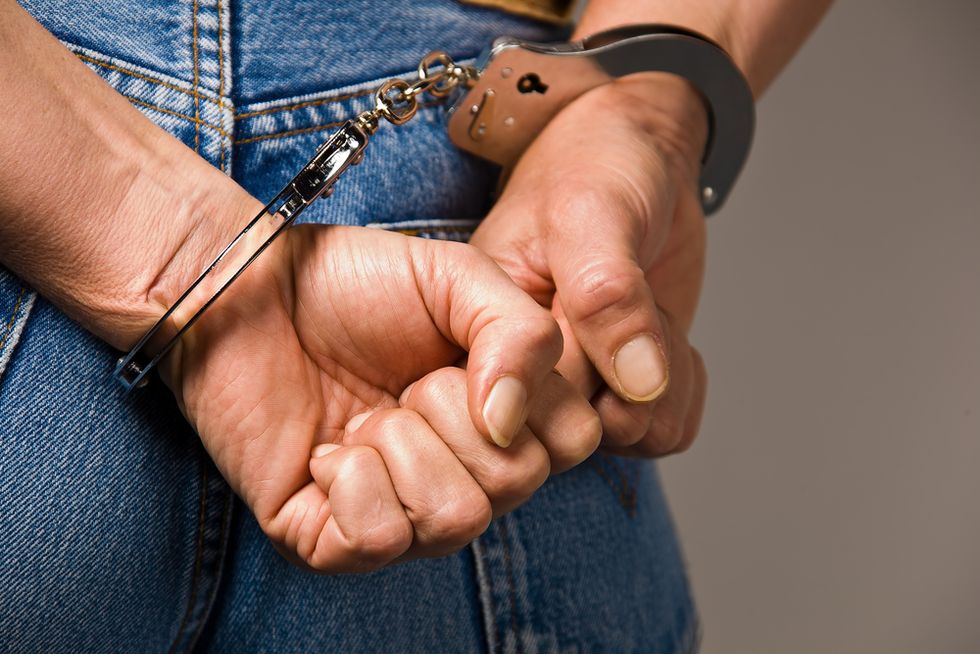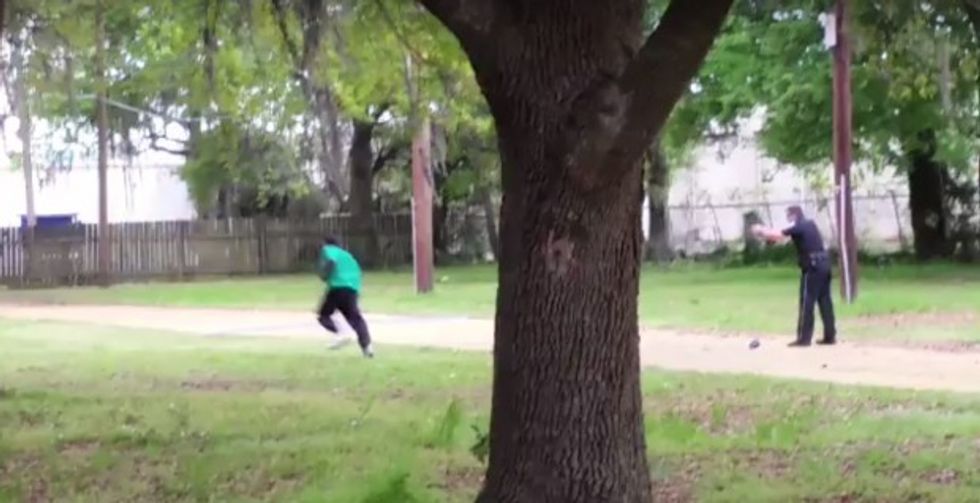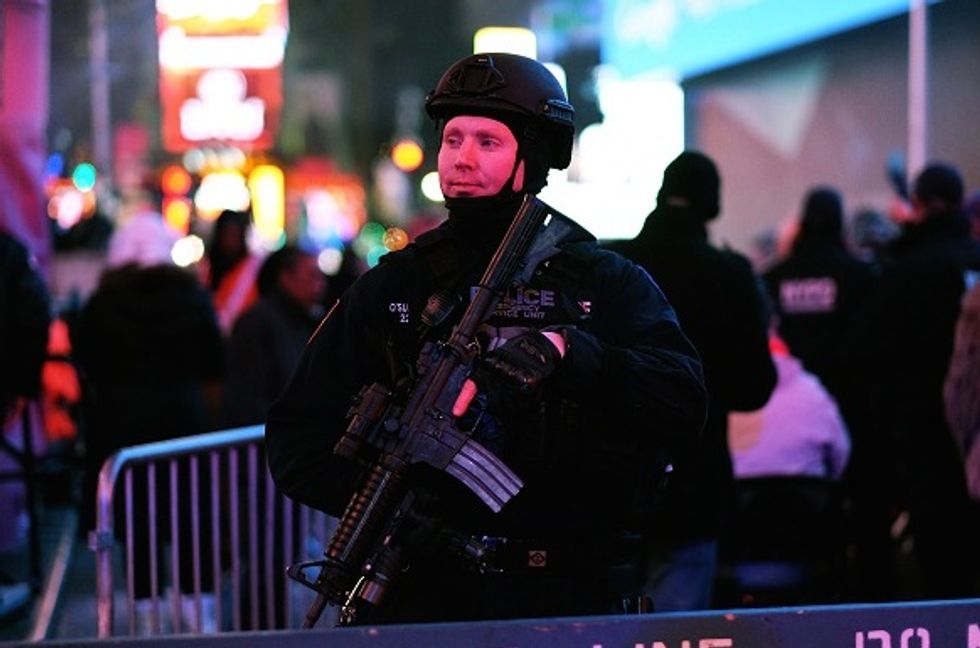
Shutterstock

An Arizona police officer ran his cruiser straight into an armed suspect — it was caught on a dashcam.
A Virginia cop shot a teen with a Taser and pulled him out of the car — it was recorded on a cellphone.
A South Carolina officer shot and killed at a man after he took off running when he was pulled over for a broken tail light — it too was recorded on video.
A deputy in Oklahoma reached for his Taser and pulled the trigger, only to learn he held his handgun instead — the fatal mistake, all caught on camera.

With so much footage coming out these days showing officers' use of force, it's easy for the general public to think that police brutality is on the rise. But is it really, or are we just seeing more use of force — justified or not — because so many people have access to smartphones and police officers are using more dashboard and body cameras?
The answer to that question depends on who you talk to.
'I'm Not Going to Comply'
The two former law enforcement officers and a civil rights lawyer TheBlaze spoke with agreed that it's only natural for there to be more video evidence of these situations as the technology becomes more available. However, some say it doesn't necessarily mean the use of force is on the rise, while another argues the opposite, citing a "militarization" of the police force as a factor.
"In my day ... when you told guys to 'put your hands behind your back,' they did it," Steve Albrecht, an author of police tactical books who spent 15 years as a San Diego cop, told TheBlaze.
[sharequote align="center"]"In my day ... when you told guys to 'put your hands behind your back,' they did it."[/sharequote]
These days, there seems to be a "certain general entitlement of 'I’m not going to comply,'" he said, explaining why the use of force is enacted in many of the situations caught on camera.
Actor Terry Crews just recently shared similar thoughts with the Flint Journal, his hometown newspaper.
"I think a lot of kids now are like, 'bump that, I know my rights,' and you want to fight back," the "Brooklyn Nine-Nine" actor told the Journal. "But I'm sorry, that man has a gun and you don't. Those odds are not in your favor."
Lance LoRusso, an attorney who spent 12 years as an officer in Cobb County, Georgia, said he doesn't necessarily think police brutality is on the rise, but the use of technology — both by citizens and police officers — is.
Some of what is captured in these videos has the general public up in arms, though. LoRusso said this speaks of their lack of understanding in what is the officer's right — and duty — to do.
Arizona police officer Michael Rapiejko, who hit a man suspected of stealing a rifle with his police cruiser, enacted a "lawful and reasonable use of deadly force," LoRusso said.
Watch that dashcam video:
"If you see a video of a convenience store robbery and an officer walks in and just shoots the suspect who is pointing a gun at the clerk, [people might ask], 'Don’t you have to give warning first?' The answer is no," said LoRusso, the author of "When Cops Kill." "Not only can they [just take the shot], but in many situations, they must."
Albrecht said police now especially are in a dangerous position, facing issues like mental illness, criminals with guns and more people resisting general questioning or arrest. In a potentially dangerous situation, police officers assess various factors that could affect their safety and that of the general public and, if necessary, they'll use force to protect these groups, he said.
'Cops Are Victims of Training'
[sharequote align="right"]"I think a lot of cops are victims of training that’s been instituted by a paranoid federal gov't."[/sharequote]John Whitehead, a constitutional law and human rights attorney who founded the civil liberties nonprofit Rutherford Institute, says the inappropriate use of force by cops is not only on the rise, but it's a "huge crisis" that people are "starting to wake up to."
Whitehead, author of "Battlefield America: The War on the American People," said the tactics used by police today would not have been seen 30 years ago, arguing that training changed after 9/11 with the establishment of the Department of Homeland Security.
"The military trains a lot of the SWAT teams," he said. "When SWAT teams come in the door ... they’re coming in as military now."
"I’ll say this: I think a lot of cops are victims of training that’s been instituted by a paranoid federal government," Whitehead added. He thinks even the mentality of cops and how they view citizens has changed over the years.
The training and military-style gear, such as AR-15 rifles and black boots, changes the psychology of the police officer, Whitehead said.
"The old view of a policeman was ‘protect and serve;' you don’t see that anymore. When a policeman looks at you now he looks at you differently," Whitehead added, noting that officers often refer to citizens as "civilians" now, something he think also speaks to the militarization of the force.

An article published in an issue of the 1967 Journal of Personality and Social Psychology proposed the "weapons effect" hypothesis, which suggested that "stimuli commonly associated with aggression can elicit aggressive responses from people ready to act aggressively." Researchers found that when study participants were in the presence of weapons, their actions were more hostile.
"The guns had evidently elicited strong aggressive responses," the study authors wrote.
As for what people wear, another study published in a 2001 FBI Law Enforcement Bulletin said "alterations to the traditional paramilitary police uniform can result in changes in public perception."
[sharequote align="center"]"No law enforcement officer wants to shoot and kill someone — ever."[/sharequote]
Karl Bickel, a senior policy analyst with the Department of Justice's Office of Community Oriented Policing Services, addressed the issue as well in its e-newsletter, though he doesn't offer a conclusion on what's to be done (emphasis added):
SWAT is not the only contributing factor to the growing militarization of our police. Some evidence suggests that the military type battle dress uniforms (BDU) that are becoming more prevalent as standard dress for patrol officers, and the stress training patterned after military boot camps may have a negative impact on the very relationships between police and community members that are critical to the operationalization of community policing.The type and color of the uniform has been said to contribute to a citizen's perception of the officer, and some research has suggested that the uniform color can influence the wearer—with black producing aggressive tendencies, tendencies that may produce unnecessary conflict between police and the very people they serve.
Albrecht and LoRossu both argued that the more militaristic look of cops, the weapons their using and their tactics are a response to the threats they face out in the field. LoRusso said the boots, for example, are a health issue.
"Do you know why they’re wearing black boots?" LoRusso asked. "Law enforcement officers go into people’s back yards, hop fences. It’s a workers' comp issue. If you issue people boots, they don’t sprain and break their ankles as much."
Albrecht, though, said he thinks that "cops in today’s world use too many devices and not enough of their brains, mouth and hands."
"As police work evolved, we got more gizmos, devices, tools," he said. And it's "almost to point of over using it."
'No Law Enforcement Officer Wants to Shoot and Kill Someone — Ever'
When there are videos showing an officer's use of force that elicit concern from the general public about the cop's actions, what's to be done?
LoRusso and Albrecht said the public often only sees the video and draws their conclusions from that. What they don't see are the results of the internal investigations that happen afterward.
"People want a thorough investigation, but they also want quick answers," LoRusso said. "A normal, no hitches ... investigation can take three months or more."
By then, LoRusso said, the public, that was so up in arms, has often moved on and no longer cares about the results, even if the officer's use of force was deemed justified.
What's more, both of the former cops pointed out that use of force situations might seem more prevalent because they get more attention than the countless interactions between police and citizens that go perfectly well. This video recorded by a black man of his interaction with a white cop during a traffic stop is one such example.
"No law enforcement officer wants to shoot and kill someone — ever," LoRusso said.
Still, Whitehead said he offers this advice to people interacting with cops.
"Get people down on the floor and don’t move," he said. "I instruct people to do that immediately."
—
Front page image via Shutterstock.